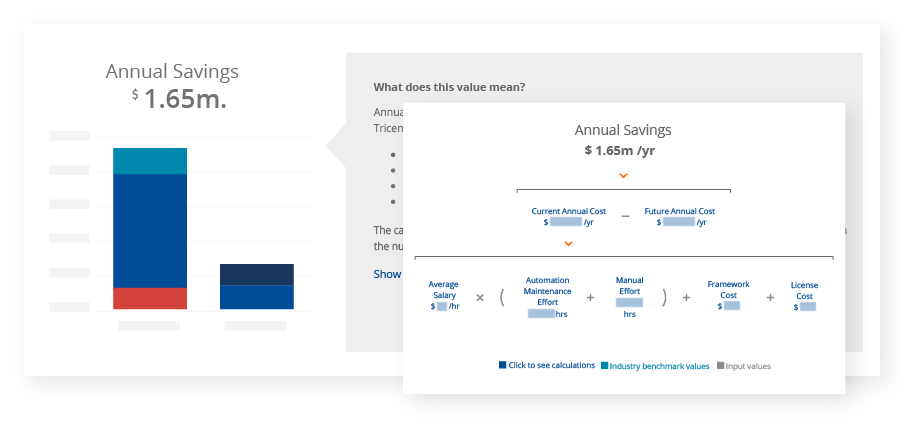SAP change intelligence: Everything you need to know
In this guide, we’ll break down the key points you need to know...
Have you developed a vision for modernizing your testing? Now it’s time to make that vision a reality. When you set out to transform your testing practice, don’t just aim to improve a few processes—instead, strive to make sweeping changes in the culture and activities of your testing organization. By definition, a transformation should entail major changes. It’s your chance to implement an entirely new vision for testing.
Of course, the bigger the vision, the more difficult it will be to implement. This does not mean you should scale down your ambitions. Instead, focus on managing your transformation carefully so that you can achieve all your goals as quickly as possible and with minimal risk.
The Continuous Testing Framework offers a strategy for doing exactly that. It will help you:

What’s your organization’s vision for its testing transformation? It should serve as the baseline for your plan. Your vision may sound something like:
Each of these visions is ambitious—and each will have profound implications for the testing organization. If you ignore these implications, you’ll doom your transformation to failure. For example, the typical organization will attempt to address its vision by:
Each of these changes is a step in the right direction. But if they are treated as single, isolated activities with no connection to the vision, it can end with executives making one of the following complaints:
When ambitious visions end in disappointment and failure, it’s likely the organization failed to:
To avoid these pitfalls, make sure you implement tools and best practices from the Continuous Testing Framework as you proceed to our all-important next step.
LEARN MORE ABOUT THE CONTINUOUS TESTING FRAMEWORK

Only you can leverage the organization to define the vision for your testing transformation. In our blueprint to modernize testing, we recommend that you identify your most important people. Once they’ve bought into your vision, they will be crucial to your testing transformation. When you enlist the right people and use our framework, you’ll be able to translate your vision into clear objectives and specific capabilities. With testing technology that ranges from test automation to performance testing, how can you select the capabilities that will help your organization most?
Begin your testing transformation by:
Think about the current state and desired state of your testing processes and specify the business impact and time criticality of each process improvement you want to make – this will help you to formulate specific objectives for your transformation.
For example, if you want to investigate capabilities such as; intelligent test automation, unified test management, and data integrity testing, Tricentis’ customer stories and product overviews can help you visualize how those capabilities will benefit you, and provide other resources to educate your team on what will be most important for carrying out your vision.

Once Business Insights has helped you determine your objectives and identify the best capabilities for your plans, you can begin analyzing the value of the improvements you’re about to make for modernizing your testing. Suppose your objectives are to release products more frequently, increase testing efficiency, and detect defects more quickly. It’s now time to calculate the value of these improvements.
To get buy-in from management, you must build a solid business case by identifying impactful metrics, showcasing the calculations that back up your claims, and creating a persuasive presentation. Our Value Calculator does all the work for you so you can focus on your business. The Value Calculator will help you demonstrate to your peers the importance of investing in testing so that you can accelerate your testing transformation.
With the Value Calculator, you can:
One output of the Value Calculator is a Value Report (e.g. for Automation). It offers an analysis based on the values provided blended with industry benchmark values. The report is split into two main sections: the Future State and the Rate of Return. The Future State shows the business benefits you can achieve annually once you’ve fully deployed the test automation capability and testing methodologies. The Rate of Return shows the benefit gains through a 36-month period. You’ll come away with specific projections of your:

Because maintaining transparency is key, the Value Calculator provides a full explanation of how it came up with each of these data points, showing you the benchmarks and assumptions it used in its calculations. You maintain full control over how data is displayed in the report.

LEARN MORE ABOUT THE VALUE CALCULATOR
By now, you know what fuels your transformation strategy, which tools you’re going to use to do it, and the value you’ll gain once you complete your transformation. But you still need to figure out the specifics of how you’ll achieve your objectives. For example:
In our Continuous Testing Framework, we envision the Enterprise Enablement team driving these objectives. The Enterprise Enablement Team can help here by assessing current testing practices and guiding you through this journey. They will find the gaps in your current testing practice and provide recommendations on how to start or scale on your continuous testing journey.

LEARN MORE ABOUT THE CONTINUOUS TESTING FRAMEWORK
Find your sweet spot for trying out your new approach. It could be a single application, product, project, or program. Take an iterative approach rather than attempting a “big bang” that will affect multiple projects across your organization. How do you select such a project?
By identifying the right teams to involve and the right metrics with which to measure their improvement, you can set up your implementation for success. The next step is to map this information to your testing team or testing organization. You need a bridge between your objectives and your transformation plan. That’s why Tricentis created the Maturity Assessment.
The Maturity Assessment is designed to help you plan and measure your transformation on the team and enterprise levels. You can:

LEARN MORE ABOUT THE MATURITY ASSESSMENT
The Assessment enables you to perform these measurements at the team level and lets you aggregate it to a more holistic view in an executive report. The team-level view lets you track 12 essential elements of continuous testing. The executive report view helps you identify key initiatives and prioritize your roadmap to the future. Armed with this information, you can make the case for your transformation based on facts and metrics—not anecdotes or gut feelings.
Are you planning to transform your testing processes? Or are you in the middle of a transformation? Increase your chances of success by using Tricentis’ proven tools. You can:
In this guide, we’ll break down the key points you need to know...
See Tosca’s latest cloud capabilities, from advanced test...
Implement 3 smart quality gates to achieve zero defects in...
Discover how you can keep pace with Salesforce innovation while...
Get an exclusive first look at NeoLoad 2025.1: New UI, extended...